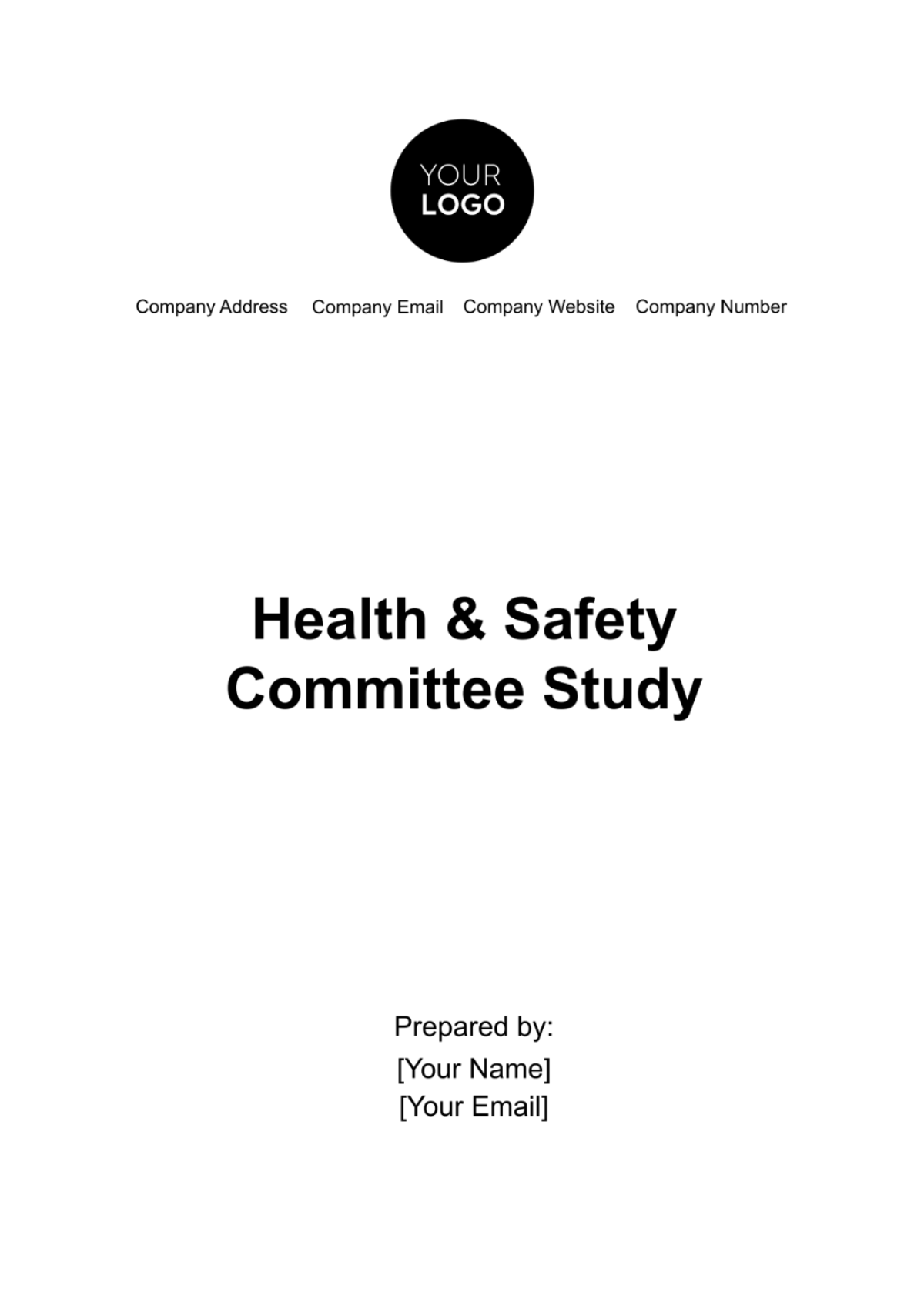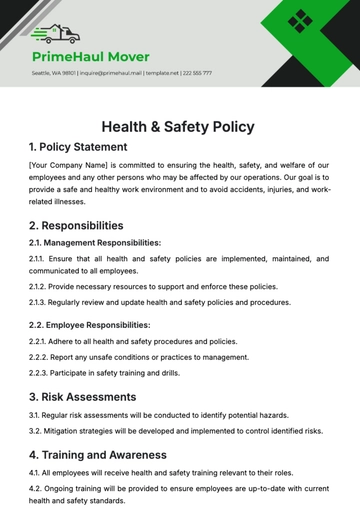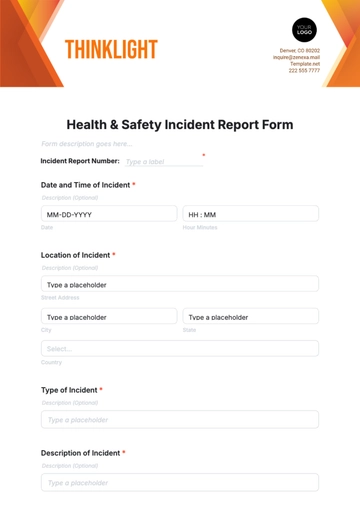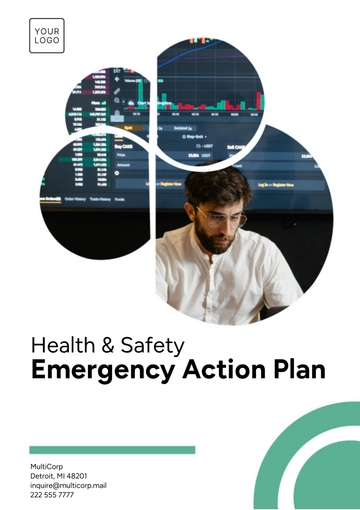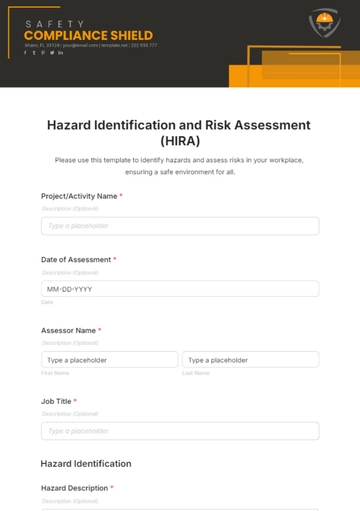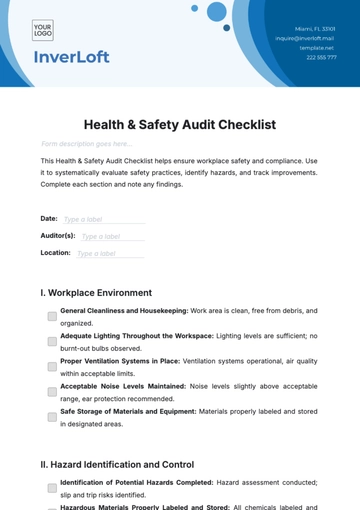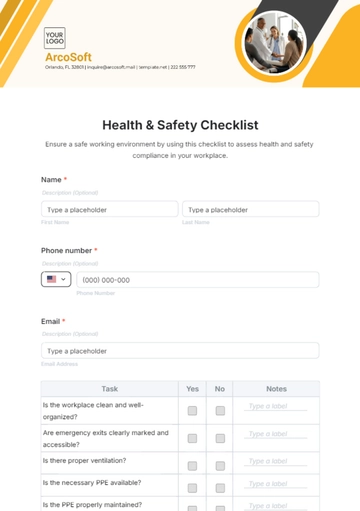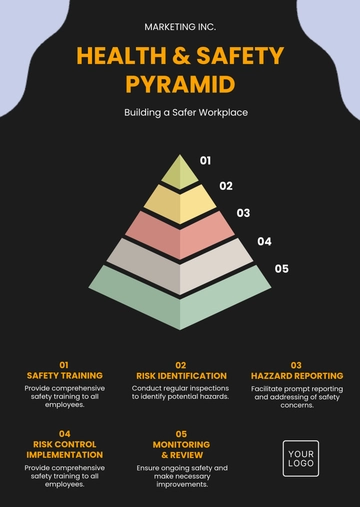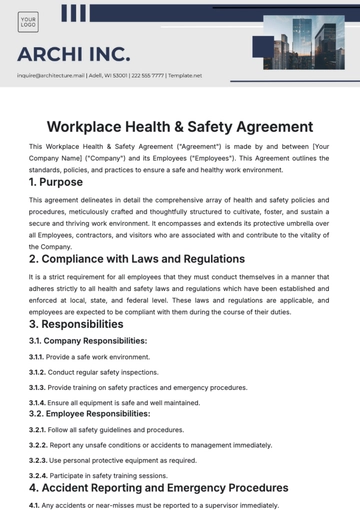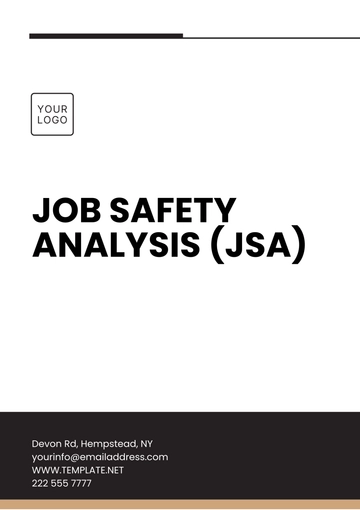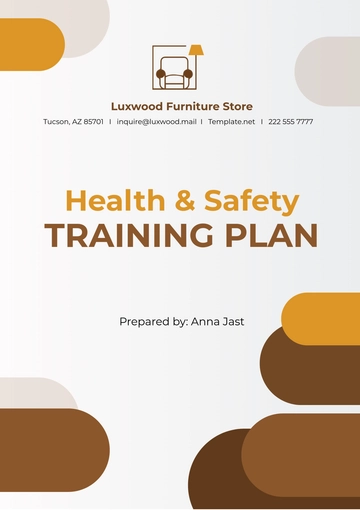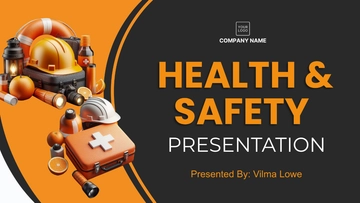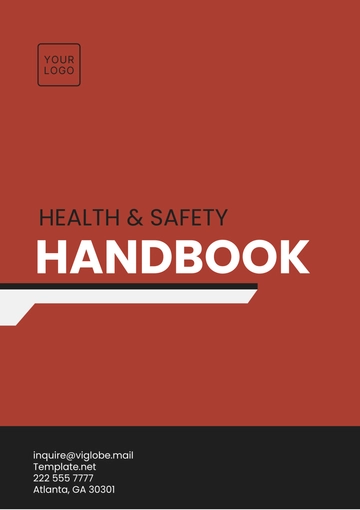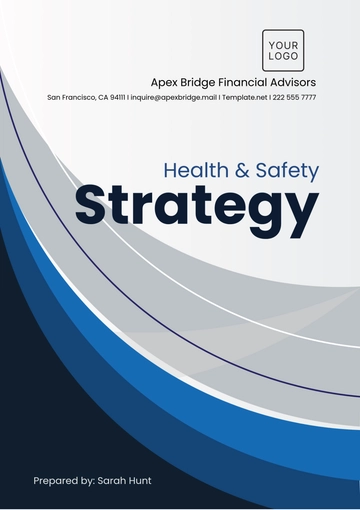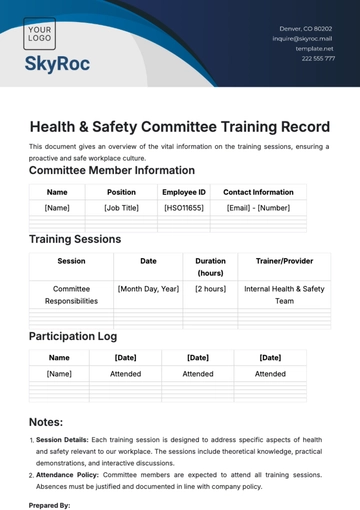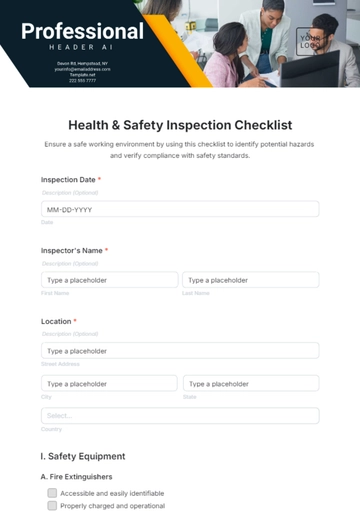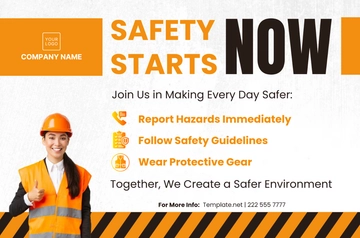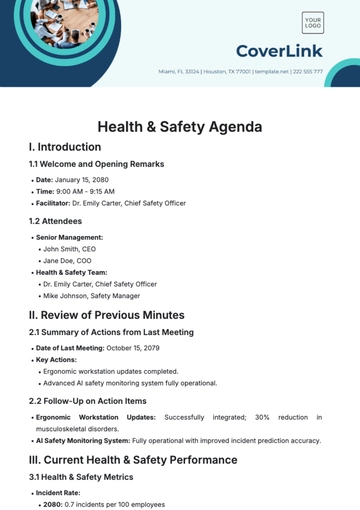Health & Safety Committee Study
I. Executive Summary
The study provides an in-depth analysis of current health and safety practices at [Your Company Name], identifying areas for improvement and proposing actionable recommendations.
Overview of the Study: This study assesses the effectiveness of existing health and safety protocols, employee compliance levels, and the incidence of workplace injuries. |
Main Conclusions: Key findings indicate areas where safety practices can be enhanced, particularly in emergency response procedures and ergonomic workstations. |
Recommendations: Recommendations include the implementation of an updated emergency response plan and the introduction of ergonomic assessments for all workstation setups. |
II. Introduction
This section establishes the foundation for the study, outlining its objectives and providing essential background information.
Purpose of the Study: To evaluate the current state of workplace safety and develop strategies to reduce the risk of injuries and health issues among employees. |
Scope of the Study: The study focuses on safety protocols in high-risk areas, employee adherence to safety guidelines, and the effectiveness of current training programs. |
Background Information: Provides context on industry safety standards, historical safety performance at [Your Company Name], and recent changes in workplace health and safety regulations. |
III. Methodology
The methodology section details the systematic approach used to conduct the study.
A. Research Methods
A mixed-method approach, combining quantitative data from safety audits with qualitative data from employee interviews.
Method Type | Description | Application in Study |
Quantitative Analysis | Analysis of numerical data from safety audits | Used to identify trends in incident rates and compliance levels |
Qualitative Analysis | Interviews and focus group discussions | Gathered insights into employee perceptions and attitudes toward safety practices |
B. Data Collection
Safety records, incident reports, and feedback from employees through surveys and focus groups.
Data Source | Type of Data | Purpose in Study |
Safety Records | Records of safety incidents and accidents | Analyzed for patterns and frequency of incidents |
Incident Reports | Detailed reports of individual incidents | Provided context and details of safety breaches |
Employee Surveys | Feedback on safety culture and practices | Assessed overall employee satisfaction and concern areas |
Focus Groups | In-depth discussions with selected employees | Gained qualitative insights into the effectiveness of current safety measures |
C. Analysis Techniques
Quantitative data were statistically analyzed for trends, while qualitative data were thematically analyzed to understand employee perceptions and attitudes towards safety.
Data Type | Analysis Technique | Outcome |
Quantitative Data | Statistical Analysis (e.g., frequency, correlation) | Identified high-risk areas and effectiveness of safety protocols |
Qualitative Data | Thematic Analysis | Highlighted employee concerns, suggestions, and perceptions of safety culture |
Combined Data Analysis | Mixed-Methods Approach | Provided a comprehensive view of safety practices and areas for improvement |
IV. Findings
This section presents the results of the study, providing a detailed analysis of the findings.
A. Data Presentation
Here are some charts showing trends in safety incidents and graphs depicting levels of compliance with safety protocols.

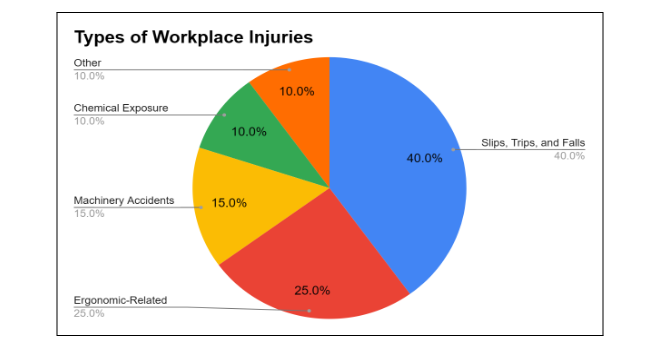
B. Discussion of Findings
A significant finding is the correlation between the rise in ergonomic complaints and the lack of ergonomic assessments, which currently stand at only 30% coverage of workstation setups.
The data reveals a concerning trend: departments with lower safety training attendance (below 60%) reported 35% more incidents compared to departments with higher attendance rates.
Analysis of injury types shows that areas without anti-slip flooring have seen a 50% higher incidence of slips and falls, suggesting a direct impact of environmental factors on these types of accidents.
C. Comparison with Industry Standards
Compared to industry standards, [Your Company Name]’s overall safety incident rate is 5% higher, suggesting a need for more robust safety measures.
The company’s ergonomic complaint rate is 15% above the industry average, highlighting a significant area for improvement.
However, in areas such as chemical handling and machinery operation, the company performs well, with incident rates 10% lower than the industry average, reflecting effective safety protocols in these specific areas.
V. Conclusions
The study's conclusions provide a nuanced understanding of the current state of health and safety at [Your Company Name], highlighting both strengths and areas for improvement.
Interpretation of Findings: The study underscores that general compliance with safety protocols is commendable, reflecting a strong foundational safety culture within the company. However, it also brings to light critical gaps in specific areas, particularly in ergonomic safety and emergency response preparedness. Ergonomic concerns are notably pronounced in departments with high computer usage, suggesting a need for targeted interventions. Similarly, while basic emergency response training is in place, the study reveals it lacks comprehensiveness, leaving employees inadequately prepared for a range of potential emergency scenarios.
Implications for Workplace Safety: The ergonomic issues, if unaddressed, could lead to a rise in musculoskeletal problems, affecting employee health and productivity in the long term. This not only poses health risks to employees but can also result in increased absenteeism and reduced work efficiency. In terms of emergency preparedness, the current training gaps could potentially lead to ineffective response during critical situations, endangering employee safety and company assets. Addressing these issues is crucial not only for meeting regulatory compliance but also for nurturing a genuinely safety-first work environment.
Overall Impact on the Company: The findings and their implications underscore a significant opportunity for [Your Company Name] to elevate its workplace safety standards. Addressing these key areas can lead to an enhanced safety culture, foster employee well-being, and demonstrate the company's commitment to being an industry leader in health and safety practices. Such improvements are likely to resonate positively with both internal stakeholders and the external market, reinforcing the company's reputation as a responsible and employee-centric organization.
VI. Recommendations
The recommendations section of the study provides a strategic roadmap for [Your Company Name] to enhance its workplace safety, based on the findings and analysis.
Actionable Suggestions: The study strongly recommends implementing a comprehensive ergonomic assessment program. This would involve evaluating and improving workstation designs, including the provision of ergonomic furniture and computer accessories tailored to employee needs. In terms of emergency preparedness, the study advocates for a revamped training program. This program should cover a broader range of scenarios, equipping employees with the necessary skills and confidence to effectively respond to various emergency situations.
Implementation Strategies: For ergonomic improvements, a phased approach is recommended, prioritizing departments with the highest reported incidents of ergonomic-related complaints. This could be complemented by workshops and training sessions on proper ergonomic practices. Regarding emergency response training, the introduction of regular, diverse emergency drills is suggested. These drills, simulating different emergency scenarios, should be conducted quarterly to ensure all employees are well-prepared and familiar with the procedures.
Potential Impact Assessment: The implementation of these recommendations is expected to bring about significant positive changes. Ergonomic improvements are projected to reduce workplace-related discomfort and injuries by at least 50% within the first year, leading to improved employee morale and productivity. Enhanced emergency training is anticipated to not only bolster employee safety but also instill a sense of confidence and preparedness, contributing to a robust safety culture. Collectively, these changes are likely to lead to a healthier work environment, lower absenteeism, and enhanced overall company performance.
Prepared by:
[Your Name]
[Your Job Title]
[Your Company Name]
© [Year] [Your Company Name]. All Rights Reserved.
Health & Safety Templates @ Template.net
